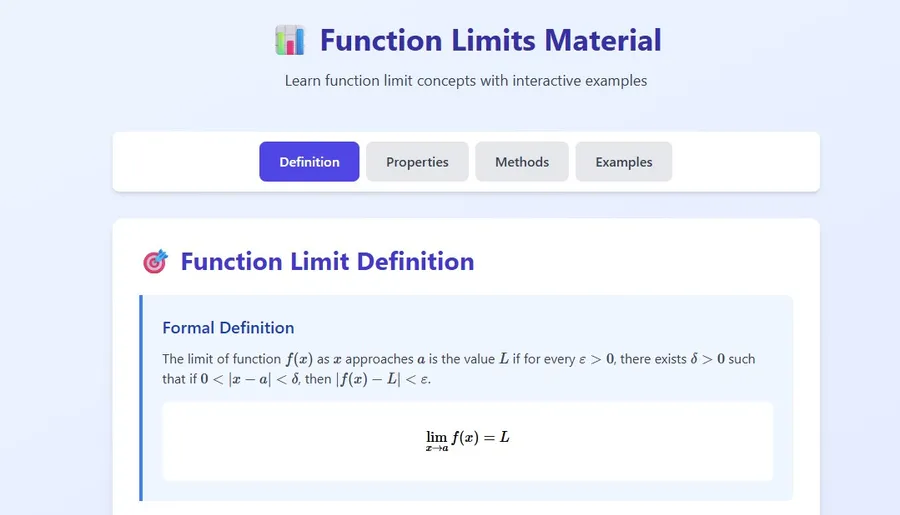Learn about the Limit of a Function, one of the fundamental concepts in calculus (differential and integral) and high school mathematics.
📘 What is a Function Limit in Mathematics?
A function limit is one of the basic concepts in calculus and high school mathematics that describes the value a function approaches as the variable gets close to a certain point. Limits are a crucial foundation for learning derivatives (differential) and integrals.
📐 Writing the Limit Notation
In mathematics, a limit is written as:
Meaning:
As approaches , the function approaches the value .
A limit can exist even if the function is not defined at that point. This is what distinguishes the value of a limit from the value of the function.
🔄 Simple Example of a Function Limit
For example, the function:
Then:
Explanation: As approaches 3, the function value approaches 5. This is the simplest example of a linear function limit.
📊 Approaching Limits Using a Table
If you want to understand limits numerically, you can look at them in the form of an approach table:
| 1.9 | 3.61 |
| 1.99 | 3.9601 |
| 2.01 | 4.0401 |
| 2.1 | 4.41 |
It can be seen that:
🧭 Left-Hand and Right-Hand Limits
In calculus, we know:
Left-hand limit:
Right-hand limit:
🔁 If Both Are Equal:
❌ Example of a Nonexistent Limit
Consider the following function:
Because the left and right limits are different, then:
📝 Example Problems on Function Limits and Their Solutions
Problem 1:
Solution:
Problem 2:
Problem 3:
📌 Conclusion: What is a Function Limit?
- A limit shows the direction a function approaches, not the function’s value at that point.
- A limit can still be calculated even if the function is not defined at that point.
- Understanding limits is very important as a foundation for derivatives and integrals in grades 11 and 12 of high school.
Whats next?????
